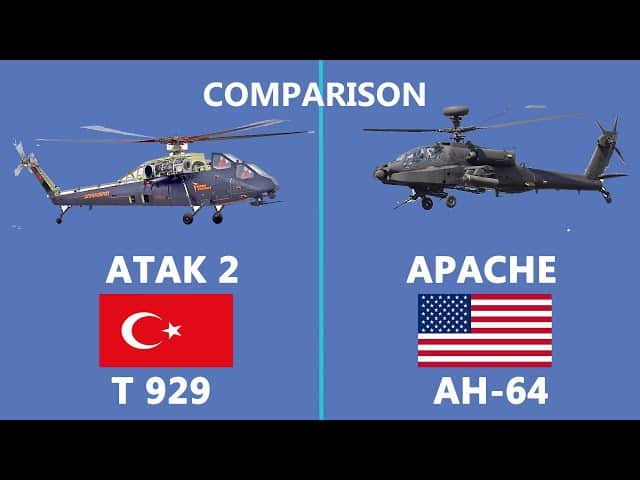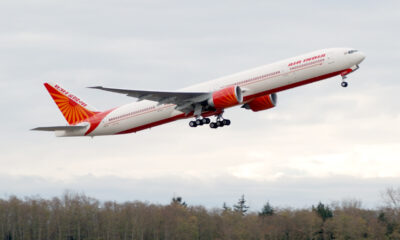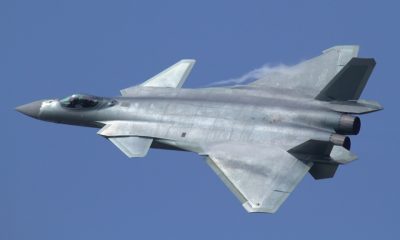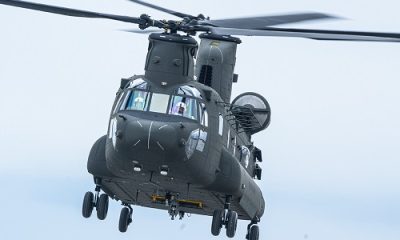Aircraft comparison
Comparison between TAI T929 ATAK 2 and Apache AH-64

The TAI T929 ATAK 2 and the Apache are both advanced attack helicopters designed for military operations. These helicopters excel in providing close air support, conducting reconnaissance missions, and engaging enemy objectives precisely.
While the TAI T929 ATAK 2 is a newer entrant into the attack helicopter market, the Apache has established itself as one of the most commonly utilized and battle-tested attack helicopters globally.
In this comparison, we will look at many characteristics of these helicopters, including their performance, weaponry, avionics, and overall capabilities, in order to recognize their similarities and contrasts in performing their intended responsibilities on the battlefield.
TAI T929 ATAK 2
Turkish Aerospace Industries is developing a twin-engine, heavy assault helicopter called the TAI T929 ATAK 2. The helicopter is designed for attack, electronic warfare, and reconnaissance missions in all-weather environments in both day and night conditions. Some of the parts and subsystems created for the T129 and T625 Gökbey helicopter programmes will be used in the Atak 2.
The AH-64 Apache is an aircraft manufactured by Boeing Defence, Space & Security. It is a twin-engine, four-blade rotor helicopter mainly developed for close air support and anti-armour tasks. It has a tandem cockpit design, with the pilot in the back seat and the co-pilot/gunner in the front seat operating the armament systems.
The ATAK II, which made its maiden flight on April 28, 2023, is currently in development. It is projected that the Turkish Army will receive it starting in 2025.
The T929 helicopter is equipped with tandem seats, an asymmetrical weapons bay, a large capacity for ammunition, a low IR signature, a digital cockpit, ballistic protection, better avionics, and the potential to engage in electronic warfare and countermeasure operations.
To improve situational awareness and target acquisition, Apache has sophisticated sensor and avionics systems.
It has a target acquisition and designation sight called the “TADS/PNVS” (Target Acquisition Designation Sight/Pilot Night Vision System), which has the ability to see in the dark and track targets while also providing thermal imaging.
A forward-looking infrared turret installed on the helicopter’s nose will have target-tracking capabilities. The helicopter will also be equipped with electronic defences including heat-seeking missile jamming systems located on the tail and infrared/ultraviolet missile warning sensors.
The heavy-class helicopter can be used for close air support (CAS) operations, armed reconnaissance and surveillance, air-to-air combat, and air-to-ground warfare.
The TAI T929 ATAK 2 and the Apache are both attack helicopters designed for military purposes. Here’s a comparison between the two helicopters.
Armament: The T929 ATAK 2 is equipped with a 20mm chin-mounted cannon, air-to-air missiles, air-to-ground missiles, rockets, and guided munitions. While Apache AH-64E features a 30mm chain gun, air-to-air missiles, air-to-ground missiles, rockets, and other guided munitions.
Engine: T929 ATAK 2 is Powered by two TV3-117 turboshaft engines, each generating 1,864.25 kW (2,500.00 hp) of power. Whereas Apache is Powered by Two General Electric T700-GE-701C turboshaft engines, Each engine produces a maximum takeoff power of 1,890 shaft horsepower (1,410 kW).
MTOW: ATAK 2 has a maximum takeoff weight of 10,000 kg (22,046 lb) and can reach a maximum speed of 318 km/h (198 mph, 172 kn). Whereas Apache has a maximum takeoff weight of 10,433 kg (23,000 lb) and can reach a maximum speed of 293 km/h(182 mph, 158 kn)
cruise speed: ATAK 2 has a cruise speed of 314 km/h (195 mph, 170 kn). And for Apache, it has a cruise speed of 265 km/h(165 mph, 143 kn).
Service Ceiling: ATAK 2 has a service ceiling of 6,096 m (20,000 ft). While Apache has a Service Ceiling of 6,100 m(20,000 ft ).
The T129, which has a maximum cruising speed of 269 km/h, was also created by Turkey in collaboration with Italy AgustaWestland. The helicopter’s standard range is 561 kilometres, while its ferry range is 1,000 kilometres. It can rise at a speed of 14 metres per second.
Although smaller and less capable than the Apache helicopter, combat aircraft cannot compete with it in terms of operations. The T129 has a wheeled landing gear, a two-bladed tail rotor, a five-bladed main rotor, and an aluminium alloy frame.
Apache has a background. The AH-64 Apache helicopter, which was built in 1975 and has undergone a number of minor updates to improve its performance capabilities, is regarded as one of the best attack helicopters in history. This helicopter’s armour is capable of withstanding direct 23 mm bullet impacts. This helicopter’s rotor blades are also built to function well even after damage.
Many aerospace items, including fighter planes and training aircraft, were exclusively created in Turkey. The Turkish Air Force’s newest addition to its product lineup will be the T929 helicopter. After the testing of the T929, we will be able to determine whether it will surpass the fighting capability of the Apache. We cannot yet say which helicopter is the finest. But what is truly impressive are the efforts made by the Turkish aerospace industry.

Aircraft comparison
Comparison between Comac C919 and A320 aircraft

The COMAC C919 and the Airbus A320 represent two significant players in the narrow-body commercial aircraft market, each reflecting its manufacturer’s vision for the future of aviation.
The C919, developed by the Chinese aerospace manufacturer COMAC, aims to challenge established Western dominance with its advanced technology and cost-effective design. In contrast, the Airbus A320, a stalwart of global aviation for decades, continues to set benchmarks for efficiency, safety, and passenger comfort.
This comparison explores the key differences and similarities between these two aircraft, highlighting their design philosophies, performance metrics, and market implications.
How the Comac C919 similar from the A320 and B737 Max:Click here
The COMAC C919, predominantly built using aluminum alloys, is equipped with CFM International LEAP turbofan engines. It has the capacity to accommodate between 156 and 168 passengers in its standard configuration.
This twin-engine jet features a six-abreast economy cabin layout. Initially, it offered options for either CFM56 or IAE V2500 turbofan engines, though the CFM56/PW6000 combination was exclusively used for the A318 model. It can accommodate 195 passengers.
COMAC C919 vs. Airbus A320: A Comparative Overview
Length: The C919 measures 38.9 meters (127.6 feet) in length, slightly longer than the A320, which is 37.57 meters (123 feet 3 inches) long. This extra length provides a marginally larger cabin for the C919.
Wingspan: Both aircraft share the same wingspan of 35.8 meters (117.5 feet), indicating similar aerodynamic properties and potential for comparable fuel efficiency and performance.
Height: The C919 stands at 11.95 meters (39.2 feet) in height, surpassing the A320’s height of 11.76 meters (38 feet 7 inches). This difference is relatively minor but may impact cabin space and cargo hold configuration.
Aircraft comparisons between the comac C919 and B737 max 8:Click here
Weight: The COMAC C919 has a maximum takeoff weight of 42,100 kilograms (92,815 pounds), slightly less than the A320’s 42.6 tonnes (93,900 pounds). The A320’s marginally higher weight suggests it may be able to handle slightly more payload or fuel.
Range: The C919 offers a range of 4,630 kilometers (2,500 nautical miles), which is shorter compared to the A320’s range of 6,112 kilometers (3,300 nautical miles). This extended range of the A320 makes it better suited for longer routes and provides airlines with more operational flexibility.
Nearly twice as much as the $50 million that analysts predicted, comac c919 price is roughly $91 million. That is comparable to the cost of the Boeing 737-800 and the Airbus A320neo, which, as of 2021, are estimated to be $106 million and $111 million, respectively.
-

 Travel1 week ago
Travel1 week agoAir India to Expand US Operations with Three New Routes After a Decade
-

 Travel2 weeks ago
Travel2 weeks agoWhy We Should Avoid These Stamps in a Passport
-

 Airlines1 month ago
Airlines1 month agoInvestigations Reveal Fake Chinese Titanium in Boeing and Airbus Jets
-

 Tech4 weeks ago
Tech4 weeks agoChina’s CATL Plans 1,800-Mile Electric Plane Launch by 2027
-

 Airport3 days ago
Airport3 days agoTop 10 Largest Airports in the World by Size
-

 Aerospace4 weeks ago
Aerospace4 weeks agoChina’s Fighter Jets Turn Wings into Autonomous Drones
-

 Airlines4 days ago
Airlines4 days agoAir India Rolls Out A350s for Delhi-New York JFK and Newark Routes
-

 Defence3 weeks ago
Defence3 weeks agoBoeing Enhances Chinook with New Engines and Block II Upgrades at $96 Million







